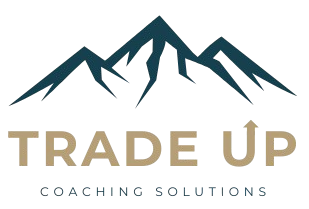The Challenge of Scaling a Contracting Business
Many contractors dream of building a multimillion-dollar business but find themselves stuck in the same cycle of long hours, inconsistent cash flow, and operational bottlenecks. While reaching $1M in revenue is an achievement, scaling to $5M and beyond requires a fundamental shift in how the business operates. Growth at this level is not about working harder—it’s about building efficient systems, developing a strong leadership team, and creating a predictable pipeline of high-value projects.
Transitioning from a Hands-On Contractor to a Business Leader
One of the biggest obstacles contractors face when scaling is their own mindset. Many believe that they must be personally involved in every aspect of the business, from client communication to job site supervision. However, this approach limits growth. Scaling to $5M requires stepping into the role of a business owner rather than a technician. This means delegating tasks, trusting a capable team, and focusing on high-level strategy rather than day-to-day operations.
The Power of Systems and Processes
A business cannot grow without solid systems in place. Successful contractors implement standard operating procedures (SOPs) for every critical function, including estimating, job costing, scheduling, and client management. Well-defined processes reduce inefficiencies, improve consistency, and allow the business to handle more projects without increasing chaos. Investing in project management software and automation tools can also streamline operations, ensuring that every job runs smoothly and profitably.
Building a High-Performance Team
A $5M contracting business cannot be run by a single person. A strong leadership team is essential for managing key areas of the business. This includes hiring project managers, administrative staff, and skilled tradespeople who can take ownership of their roles. Recruiting and retaining top talent requires creating a positive work environment, offering competitive pay, and providing opportunities for professional growth. When the right team is in place, the business can scale without the owner being the bottleneck.
Financial Mastery: Knowing Your Numbers
Many contractors assume that more revenue equals more profit, but rapid growth can be dangerous without strong financial management. Understanding job costing, overhead expenses, and profit margins is critical to scaling successfully. Contractors must develop a financial strategy that ensures each project contributes to overall profitability. This includes pricing jobs correctly, tracking cash flow meticulously, and avoiding unnecessary expenses that eat into margins. A business that scales without financial clarity risks growing itself into failure.
Creating a Consistent Sales Pipeline
Scaling to $5M requires a steady stream of high-value projects. Contractors who rely solely on word-of-mouth referrals often experience revenue fluctuations. A robust marketing and sales strategy is necessary to generate leads consistently. This can include search engine optimization (SEO) to attract clients online, paid advertising, networking, and strategic partnerships with architects and real estate developers. By implementing a reliable lead generation system, contractors can maintain a steady flow of projects and avoid the feast-or-famine cycle.
Increasing Efficiency Through Technology
Technology is a game-changer for contractors looking to scale. Investing in tools like customer relationship management (CRM) software, project scheduling platforms, and accounting systems can improve efficiency and reduce administrative workload. Mobile apps that allow real-time communication between field and office teams can enhance productivity and minimize errors. By leveraging technology, contractors can manage multiple projects seamlessly and focus on strategic growth.
Developing a Scalable Business Model
Not all projects contribute equally to business growth. Contractors must be strategic in selecting the types of projects they take on. Specializing in high-margin work, such as commercial projects or custom homes, can accelerate profitability. Additionally, offering maintenance contracts or recurring service agreements can create predictable revenue streams. A business model that prioritizes scalability ensures that growth leads to increased profitability rather than just increased workload.
The Role of Leadership in Sustainable Growth
Great businesses are built on great leadership. Contractors who successfully scale to $5M and beyond invest in their own development as leaders. This includes improving communication skills, learning to manage teams effectively, and developing a vision for the company’s future. Strong leadership creates a culture of accountability, innovation, and continuous improvement, which is essential for long-term success.
Avoiding Common Scaling Pitfalls
Many contractors make the mistake of growing too fast without the proper foundation in place. Expanding without solid systems, hiring too quickly without vetting employees, or taking on too many low-margin projects can create financial strain. To scale sustainably, contractors must grow strategically, ensuring that their team, systems, and financials are prepared for the next level of business.
The Path to $5M and Beyond
Scaling a contracting business to $5M and beyond is achievable with the right strategy. By shifting from a hands-on contractor to a business leader, implementing strong systems, hiring a reliable team, and mastering financial management, contractors can build a company that thrives without requiring their constant involvement. Sustainable growth is not about working harder—it’s about working smarter and positioning the business for long-term success.
Contractors ready to take the next step can start by evaluating their current operations, identifying bottlenecks, and implementing scalable solutions. With the right approach, the journey to $5M and beyond becomes a structured and attainable process rather than an overwhelming challenge.

